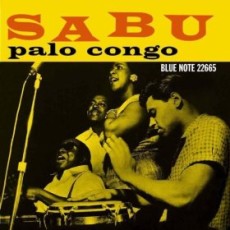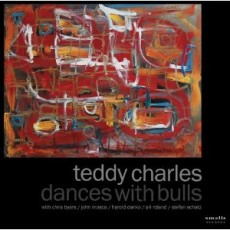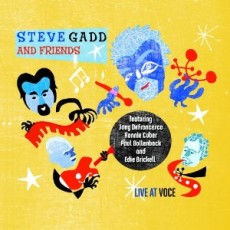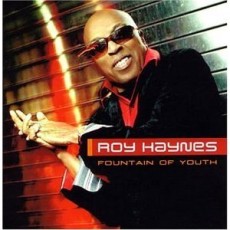
Daily Dose Of Jazz…
John Anthony Pompeo, better known as Johnny Rae or John Rae was born on August 11, 1934 in Saugus, Massachusetts and grew up in music, as his mother played piano in night clubs in the Boston area. His area of musical study in jazz led him to become a drummer and vibraphonist. Graduating from East Boston High School in 1952, he went on to study piano at the New England Conservatory and timpani at Berklee College of Music.
Johnny joined Herb Lee’s R&B band right out of high school, gigged with Slim Gaillard and Milt Buckner, played drums and vibes with Al Vega and Jay Migliori. Upon the recommendation of MJQ’s John Lewis, he teamed up with to play with George Shearing, alongside Toots Thielemans, Al McKibbon on bass and three Latin percussionists that included conguero Armando Peraza. It was during this period that Peraza taught him to play timbales.
He played with Johnny Smith, Ralph Sharon, Cozy Cole and Herbie Mann throughout the Fifties. The next couple of decades were equally commanding of his talents by Cal Tjader, Stan Getz, Gabor Szabo, Charlie Byrd, Earl Hines, Art Van Damme, Anita O’Day and Barney Kessel among many others. Though mainly concentrating in the context modern jazz, he never wandered far from Latin music and the Latin jazz percussion he played.
Though he was on more than three-dozen recording sessions, Johnny only recorded one as a leader, “Opus De Jazz, Volume 2” in 1960 for Savoy. A second release under his name was in actuality him fronting Herbie Mann’s band for contractual reasons.
Since the 1980s Rae has worked in music education, has authored several instruction books and was a disc jockey in San Francisco for many years. He assembled a tribute band to Tjader called Radcliff (Tjader’s middle name) and led the band until his death. Johnny Rae, drummer and vibraphonist passed away in 1993 in San Francisco, California.
More Posts: drums,percussion,timbales,vibraphone

Daily Dose Of Jazz…
Louis “Sabu” Martinez was born on July 14, 1930 in New York City and made his professional debut in 1941 at age 11. He replaced Chano Pozo in Dizzy Gillespie’s orchestra in 1948, and began performing with Benny Goodman’s Bebop Orchestra in 1949.
Over the next 15 years, Martinez worked with jazz luminaries Charlie Parker, Duke Ellington, Count Basie, J.J. Johnson, Mary Lou Williams, Horace Silver, Thelonious Monk, Charles Mingus and Lionel Hampton; vocalist Tony Bennett, Sammy Davis Jr. and Harry Belafonte as well as Latin favorites Noro Morales, Marcelino Guerra, Tito Rodriguez and the Lecuona Cuban Boys.
A prominent conguero and percussionist in the Cubop movement in the 1950s, Martinez appeared on many important recordings and live performances during that period. Martinez also recorded several Latin jazz albums, now recognized as classics of the genre.
Martinez first recorded with Art Blakey in 1953, and contributed to his Orgy in Rhythm and Holiday for Skins projects from 1957–58. Martinez became a bandleader in 1957, recording his debut album, Palo Congo for Blue Note Records. He followed it up with releases on Vik and Alegre Records.
Martinez moved to Sweden in 1967 and recorded with the Francy Boland-Kenny big band, releasing two albums. Subsequently he led the group Burnt Sugar, which was active into the mid ’70s, but, on January 13, 1979, he died in Sweden at the age of 48.
More Posts: conga,percussion

Daily Dose Of Jazz…
Teddy Charles was born Theodore Charles Cohen on April 13, 1928 in Chicopee Falls, Massachusetts. He began his musical career studying at Julliard School of Music as a percussionist. Later he started recording and making personal appearances as Teddy Cohen with various bands as a vibraphonist, writing, arranging and producing records and in 1951 he changed his last name to Charles.
He was one of many jazz musicians who hung out at an apartment building at 821 Sixth Avenue in New York City known as the Jazz Loft rented by photographer and artist David X. Young who in turn sublet an apartment to Charles’ mentor, Hall Overton. Teddy developed into a skillful musician not only on vibraphone but piano and drums as well and was known for his open-minded approach to more advanced sounds as well as his playing.
Known as an innovator, his main body of work was recorded in the 1950s. Teddy also did session work with musicians and singers as varied as Miles Davis, Oscar Pettiford, Roy Eldridge, Slim Gaillard, Artie Shaw, Benny Goodman, Buddy De Franco and Dion. From 1953-55 he was a member of the Jazz Composer’s Workshop along with Charles Mingus and Teo Macero. This collaboration opened his style to the influences of classical music and freer improvising.
An avid seaman, Charles is the Captain of the Skipjack Pilgrim out of Greenport, Long Island, New York where he performs music locally. After spending years at sea, vibraphonist Teddy Charles started performing again until his passing on April 16, 2012 in Riverhead, New York.
More Posts: percussion,piano,vibraphone

Daily Dose Of Jazz…
Steve Gadd was born April 9, 1945 in Irondequoit, New York and when he was seven his drummer uncle encouraged him to take lessons. By eleven he had sat in with Dizzy Gillespie. After graduating from Irondequoit’s Eastridge High, he attended the Manhattan School of Music for two years before transferring to the Eastman School of Music in Rochester, playing in wind ensembles and concert bands.
After matriculation in the late ’60s, Steve played regularly with Chuck and Gap Mangione, making his recording debut on Gap’s solo album, “Diana in the Autumn Wind” in 1968. Drafted into the Army he spent the next three years drumming in the Army Music Program as a part of the Jazz Ambassadors. Discharged, Gadd returned to Rochester, formed a band and traveled to New York City where eventually the trio split. Gadd stayed on finding work as a studio musician that led to his short tenure with Chick Corea and Return To Forever.
During the ’70s and ‘80s, he toured internationally, recorded with Paul Simon and also with Al Di Meola’s Electric Rendezvous Band. In 1976, Gadd and other session musicians in New York City, including Richard Tee, Eric Gale and Cornell Dupree formed the group Stuff. Their work included appearances on NBC’s Saturday Night Live.
By the end of the 1970s, Steve Gadd was an accomplished drummer bringing orchestral and compositional thinking, great imagination and a great ability to swing to his playing. In 2005 he was awarded an honorary Doctor of Music degree from Berklee College of Music for outstanding contributions to contemporary music. He is one of the highest paid session drummers in popular music.
More Posts: drums,percussion

Daily Dose Of Jazz…
Roy Owen Haynes was born March 13, 1925 in the Roxbury section of Boston, Massachusetts and made his professional debut at the age of seventeen in his native Boston. He began his full time professional career in 1945. From 1947 to 1949 he worked with Lester Young, and from 1949 to 1952 was a member of Charlie Parker’s quintet. He recorded at the time with Bud Powell, Wardell Gray and Stan Getz.
In 1953 Roy toured with Sarah Vaughan for the next five years and then went on to work with more experimental musicians, like John Coltrane, Eric Dolphy, Andrew Hill and Chick Corea.
Haynes extracted the rhythmic qualities from melodies and created unique new drum and cymbal patterns in an idiosyncratic, now instantly recognizable style. Rather than using cymbals strictly for effect, Haynes brought them to the forefront of his unique rhythmic approach. He also established a distinctively crisp and rapid-fire sound on the snare; this was the inspiration for his nickname, “Snap Crackle”.
Over the course of his 60+ career of hard swinging since 1944, Roy is among the most recorded drummers in jazz playing in a wide range of styles ranging from swing and bebop to jazz-fusion and avant-garde. He has recorded or performed with Gary Burton, Miles Davis, Dizzy Gillespie, Christian McBride, Jackie McLean, Pat Metheny, Thelonious Monk, Gerry Mulligan, Art Pepper, Sonny Rollins, Horace Tapscott and many, many others.
As a bandleader Haynes has also led his own groups, some performing under the name Hip Ensemble and his most recent recordings as a leader are “Fountain of Youth” and “Whereas”, both of which have garnered Gammy nominations. In 2010, the National Academy of Recording Arts and Sciences bestowed upon him a Grammy Lifetime Achievement Award. Drummer, percussionist and bandleader Roy Haynes continues to record and perform worldwide.
More Posts: composer,drums,percussion


